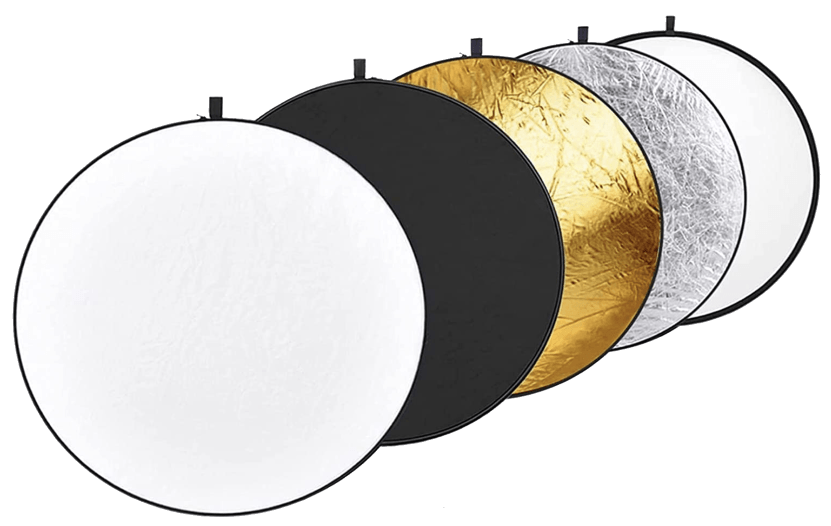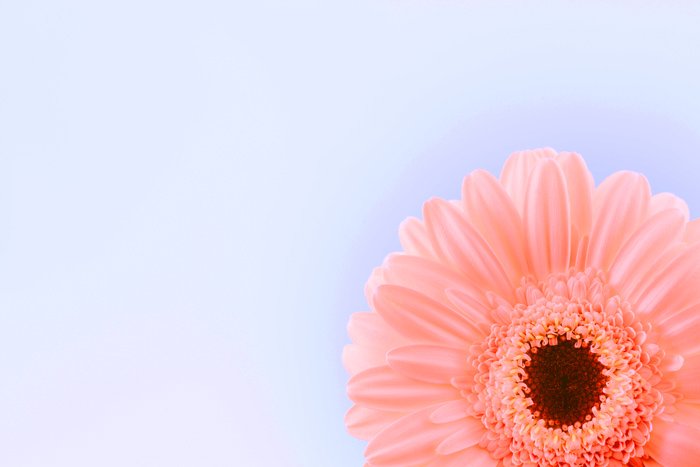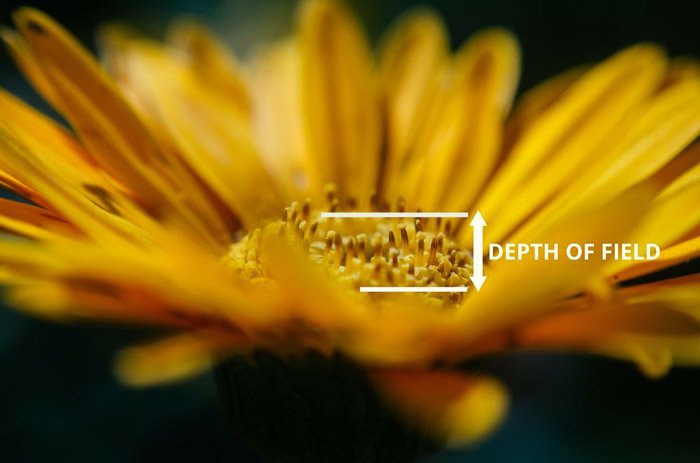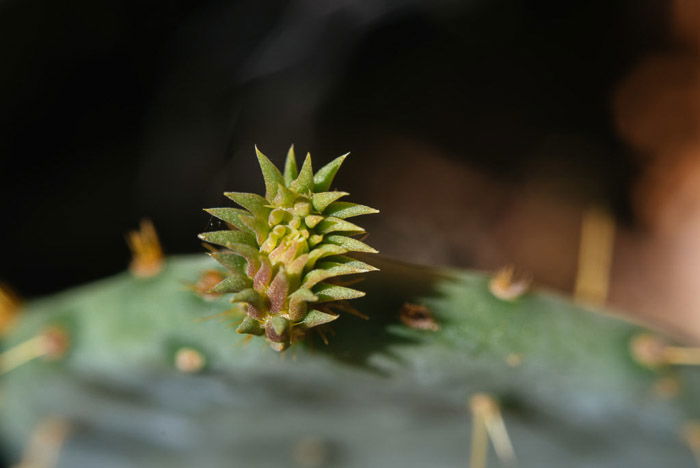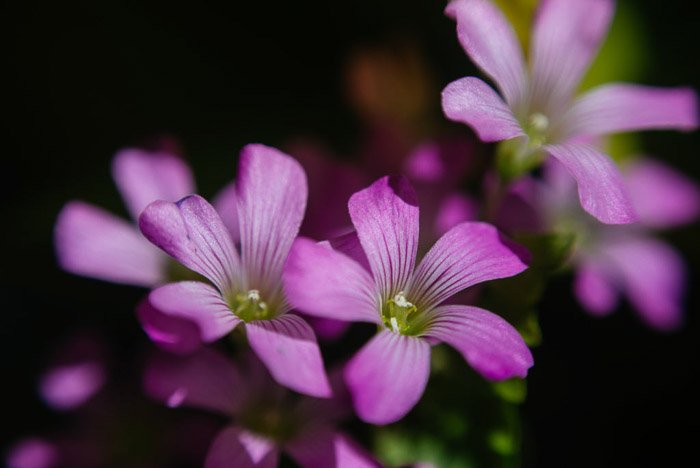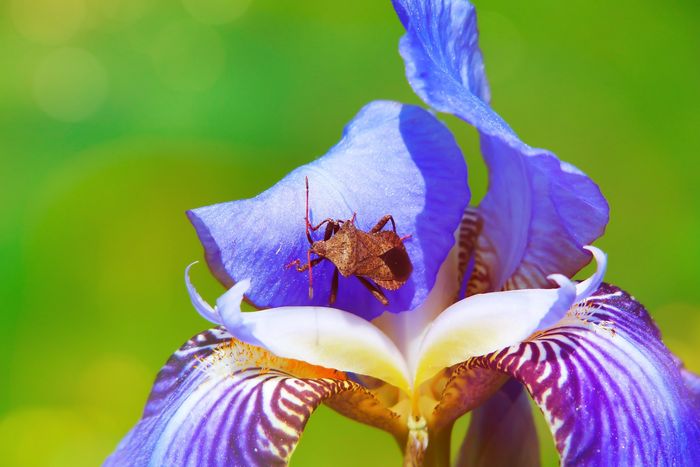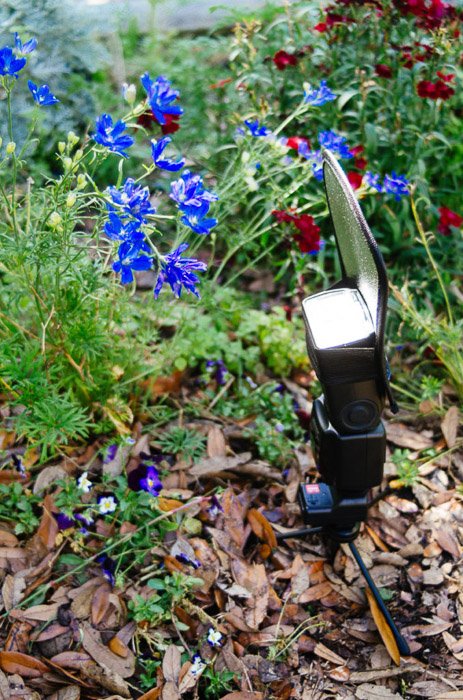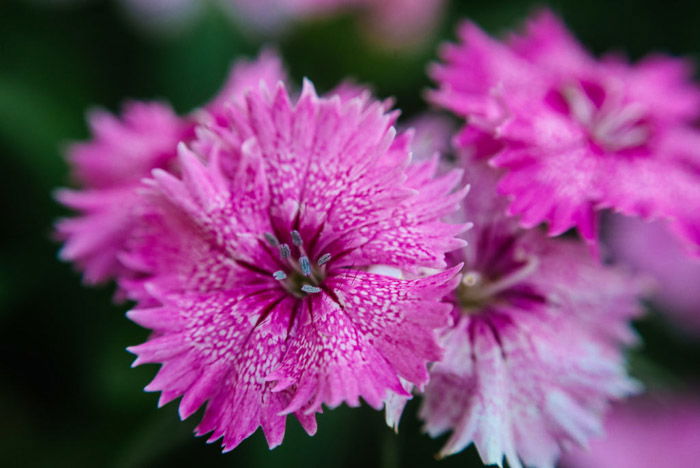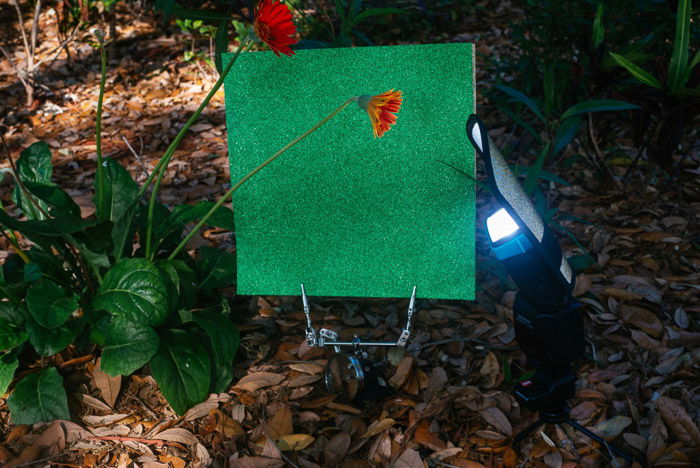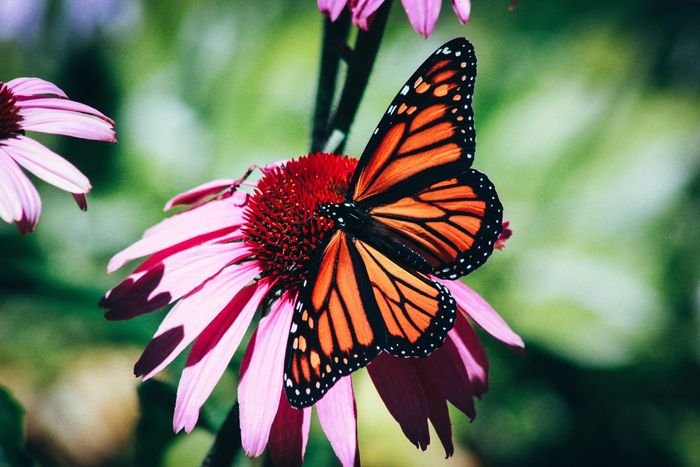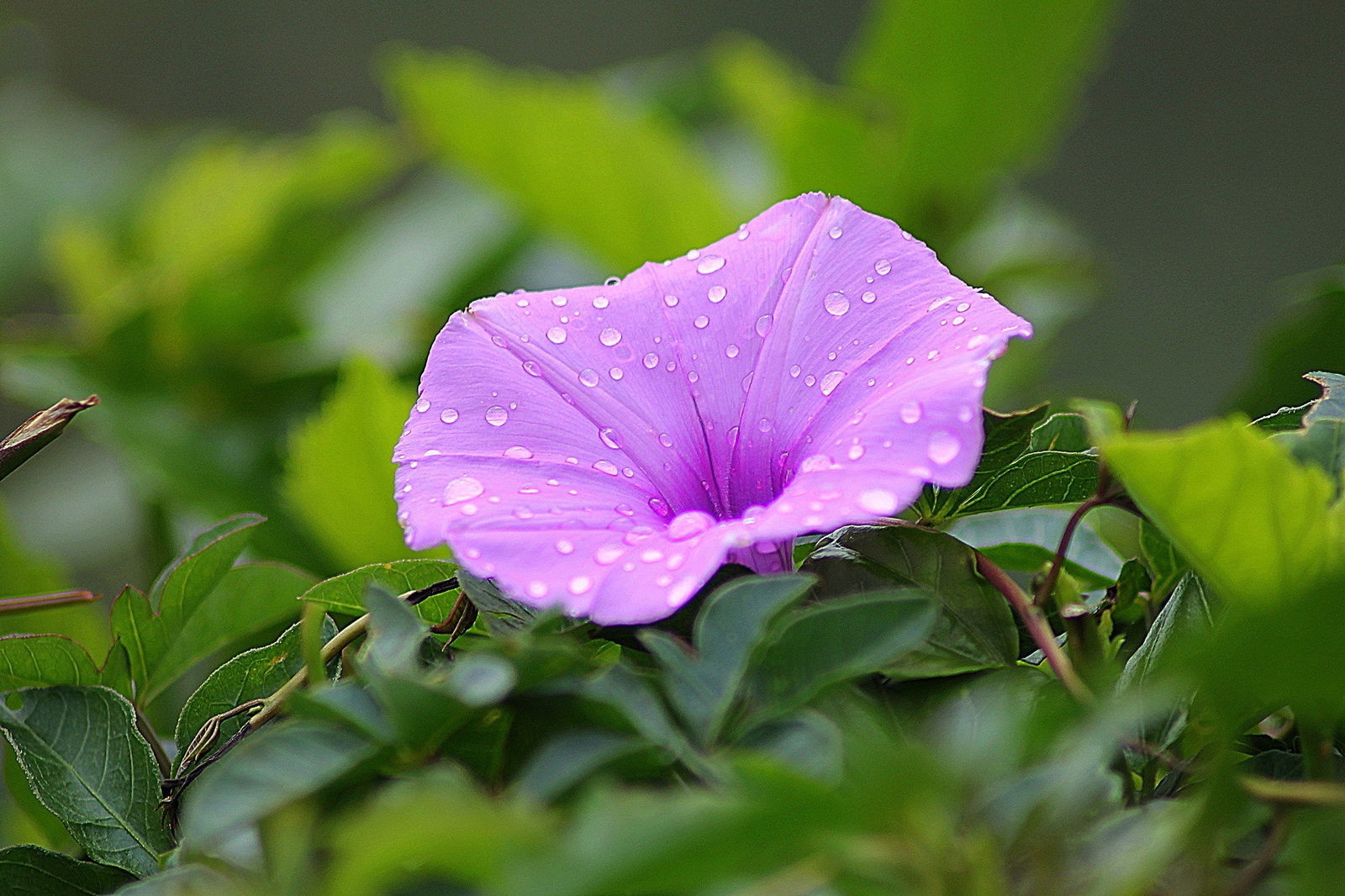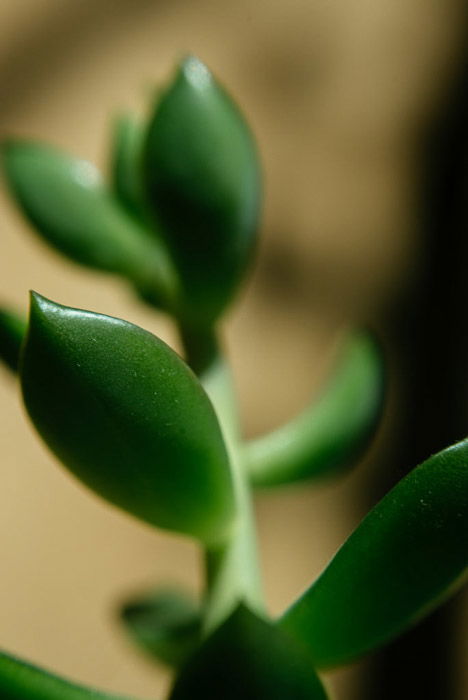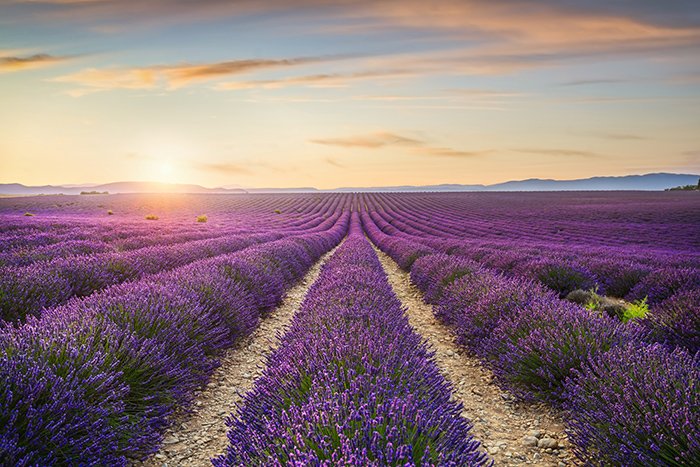You can find everything in this article you need to know for taking amazing pictures of flowers. From macro flower photography to lighting tips.
13. Flower Photography: You Don’t Need a Macro Lens
If you have the budget, a DSLR camera with a macro lens will make flower photography easier. The result will be high-quality flower photos with lots of details. But if you’re not ready to invest yet, you can always buy cheap attachments to replace those macro lenses. Bellows, extension tubes, and reversing rings are all useful and lower in price. I took most of the flower photos for this article using a reversing ring made for Nikon. I bought it online for five dollars. This accessory allows you to screw ordinary lenses on backward so that you can take macro photos.
12. Learn How to Keep Your Subject in Focus
It can be challenging to keep the focus because you have to take photos at close range for macro shots. Fortunately, your lens allows you to change the depth of field (DoF) to improve focusing. You can control how deep or shallow the focus is by choosing the appropriate f-number. Select a smaller aperture such as f/5.6 or f/8. Doing so will create a deeper depth of field but still keep the background blurry enough. If you select a wide aperture such as f/1.8 or f/2.8, you’ll have a hard time keeping your subject sharp. The area in focus will be too narrow and you won’t capture the whole flower.
11. Use Single Point Focus for Sharper Photos
Focusing can be challenging due to the shallow depth of field produced by your macro lens. Even slow movements can throw it off. Try using single-point focusing when taking flower photographs. This allows you to pinpoint exactly which part of the subject you want in focus. But this isn’t foolproof. There are times when your camera will struggle to focus. Especially when the subject moves too much. Disable your camera’s autofocus and switch to manual. Your lens won’t be hunting for focus anymore. Use the zoom button the check whether your image is sharp. By looking at your subject closer on the screen, you can decide if it’s ready for the shot.
10. Use Focus Stacking for Your Flower Photography
Despite using a small aperture, your lens will still produce a relatively shallow depth of field. This is due to the close shooting distance. And it will lead to some blur in your image. But what if you want your entire subject to be in focus? Then you’ll need a focus stack. It’s a technique that involves taking photos from different focus distances. You then stack these images together in post to create a single sharp image.
9. Try to Minimise Shake
Due to the lens’ shallow depth of field, photographing flowers is not recommended when it’s windy. A small breeze alone could throw off your focus, so choose a place that’s calm enough. The slightest movements you make with your camera can also affect your flower photos, so keep your hands as steady as possible. To add stability and minimize camera shake, you can use a tripod and trigger your shutter using a remote or a timer. Apart from that, it would also help to choose a high shutter speed (at least 1/125th) to avoid motion blur. This will help you get those close-up images, such as flower petals or water droplets.
8. Bring a Helping Hand
A helping hand can be your best friend for macro photography. This tool has two adjustable arms with clips. You can use it for a variety of tasks. You can use it as a stand for a small reflector to provide fill-in light in locations with poor light. Clip your reflector (in my case a tiny flash reflector) to the helping hand and you have a light bouncer. Need to make sure your setup is catching the sun at the right angle? Move the adjustable arms until the light is hitting the right spot.
You can also use this tool to “pose” your flowers if they’re standing at a strange angle. But you need to prevent the clip’s sharp teeth from damaging the plant you want to shoot. Wrap a small piece of paper towel around the stem and attach the helping hand onto the paper. Then pull it towards your preferred position. This technique is perfect for making withering plants stand more upright. It also works for isolating subjects from the background.
7. Compose Your Shots Like Portraits
Creative flower photography can be challenging when it comes to composition. Where do you place a single flower in your frame? How about a group of flowers or a flower field? The secret is to try to think of the flowers as human heads. It will help you a lot with composition if you imagine your pictures as portraits and not flower photos. Like in portrait photography, look for a flower’s unique features. Focus on the most beautiful parts of the flower such as the petals or the stamen. Doing so will make your viewers engage with your photo better. You should also use composition guides such as the Rule of Thirds. Turn on your camera’s grid-line and place your subject where any of those lines intersect. This will make your image look balanced. If you’re shooting indoors, you can also experiment with floral flat lay photography.
6. Try Different Perspectives for More Unique Shots
Don’t just stick to eye-level shots. Strive to be unique and try different angles. Think of a butterfly’s point of view and shoot from a higher angle. This is quite easy to execute. Especially since you’re taller than most flowers. Do not use the same angle all the time. It’s a convenient perspective, but it can get boring. Imagine an insect’s point of view and go lower. You’ll have to stay close to the ground, but the shots you get are worth it. You might have to lay down on the ground or in the mud. So wear appropriate clothing for flower photography. To help you stay clean while shooting, you can also bring a rag or an old yoga mat you can lay on.
5. Light Up Your Flower Photography With Fill Flash
The best time to take photos is before and after sunrise in the morning or around sunset time in the evening. This is when you can get the most ideal light. But when you work outdoors, you won’t always have good lighting. If the location of the flowers is a little too dim, use an external flash to add light. Pop-up camera flash won’t work for macro photography. Apart from blowing out your exposure, it also doesn’t provide the best angle. The best place to position your flash is usually beside the subject and off-camera. Since the unit can’t stand on its own, install it on a mini tripod to keep it stable. Feel free to add a diffuser to make the light look less harsh. As the flash is not attached to your camera’s hot shoe, you’ll need a remote trigger to fire it. Wireless flash trigger kits usually cost a few hundred dollars. But you can also find cheaper versions. All you have to do is attach the transmitter to your camera’s hot shoe. Then attach the receiver to your flash unit. Once installed, the flash will fire in sync with the camera.
4. Keep the Background Classic or Make Your Own
When taking photos of flowers, you want your subject to stand out. You need a blurry and simple background. The easiest way to get this result is to position your camera as far away from the background as possible. The blurry background doesn’t mean you should ignore whatever is behind your subject. People will still notice distracting visual elements. Whether they’re in focus or not. So you might as well make sure it looks tidy. An excellent backdrop is simple and should direct the viewer to the main subject. Try to incorporate elements that provide the viewer with some clue where you took the shot. Move around the flower to see how the background changes with the angle. You’ll be shooting outdoors. Try to include other plants or the sky in the background to add authenticity to the image.
When you’re outside, there’s a good chance you might find a good subject in a terrible location. This can be the side of the road or even beside a trash bin. If you find yourself in that situation, create a fake background. Use decorative paper, or even just plain white or black cardboard.
Clip the cardboard onto the helping hand, and you got yourself a beautiful background. For the image above, I used glitter paper to create eye-catching bokeh.
If you want to create a more dramatic contrast, use black backgrounds. Place a black bucket, felt, textile or any black backdrop. The vivid colors will pop out from the dark background. Your picture will be very artistic.
3. Liven Up Your Pictures With Butterflies, Bugs, or Water Droplets
Include butterflies or insects to make your macro flower photography looking more natural. Sometimes it can be challenging to look for insects interacting with flowers. Sometimes you get lucky and find bugs flying around flower beds. Most of the time, there’s a good chance you won’t find any bugs at all. But you can always use bait to attract tiny critters in your garden. One effective solution is to spray sugar water onto your plants. For a more organic approach, use smashed fruits, instead. Or, if you don’t have time to get sugar water or fruit, try using perfume. The only downside is that this method also attracts mosquitoes, so use it with caution. Once you find an insect crawling on a flower, don’t make any drastic movements. Walk up slowly without disturbing the creature. When your camera is in position, use Burst Mode and shoot a sequence to make sure you get at least one good shot.
If you don’t want to include any insects, you can also photograph flowers with water droplets on them. Take a picture of flowers right after a rain shower or spritz some water on the flowers yourself. The water droplets on the flower petals or the leaves will add interesting details to your image. Play around with the light a little bit. The droplets could create unique reflections and you get a nice sparkling effect.
2. Try Indoor Flower Photography
To make flower photography easier, try shooting indoors first. This way, you don’t have to deal with all the variables of shooting outdoors. Your house is the perfect place to practice manual mode and experiment with lighting. You can try a different background and learn how to compose shots. Buy a bunch of flowers at your local supermarket and put them in a vase. Depending on your preference, you can either place them near the window or beside a lamp. Then set up your camera on a tripod and start taking photos. Even experienced photographers can learn from controlling the light indoors. You can shoot in your room or studio and try lighting variations to create different effects. For instance, you can use a spotlight or a softbox to illuminate flowers. You can experiment with gel flash to achieve different colors and moods. Don’t be afraid to make mistakes. After all, you are in a controlled environment. You can manipulate your lighting and your subject to create consistent results.
1. Try Photographing Flower Fields
Consider looking at the bigger picture. Try shooting a whole flower field, instead of capturing a single flower. You don’t need to worry about a macro lens when you photograph flower fields. You can use a wide-angle lens to capture as much landscape as possible. Apply a few landscape photography tips to improve your composition. From meadows to coastal cliffs, you can find flower fields in different settings. You might also use flowers as unique foregrounds that lead to even more impressive views in the background. The color, shape, and texture of the flower fields can elevate any landscape photograph. And your images get an extra touch of nature when you shoot flower fields as foregrounds. So how do you photograph a flower field? If you want your foreground to be as sharp as your background, you need a large depth of field. Choose a small aperture in the range of f/11 and f/16. This way, you can get that ideal front-to-back sharpness.
Conclusion
Capturing flowers isn’t difficult at all. Since they’re static subjects, you can always keep shooting if you’re not satisfied with your images. For unique flower photos, try these flower photography tips next time you go out. Have fun and surprise yourself with the results. Looking to learn how to take stunning photos? Why not check out our ebook Photography Unlocked next!
